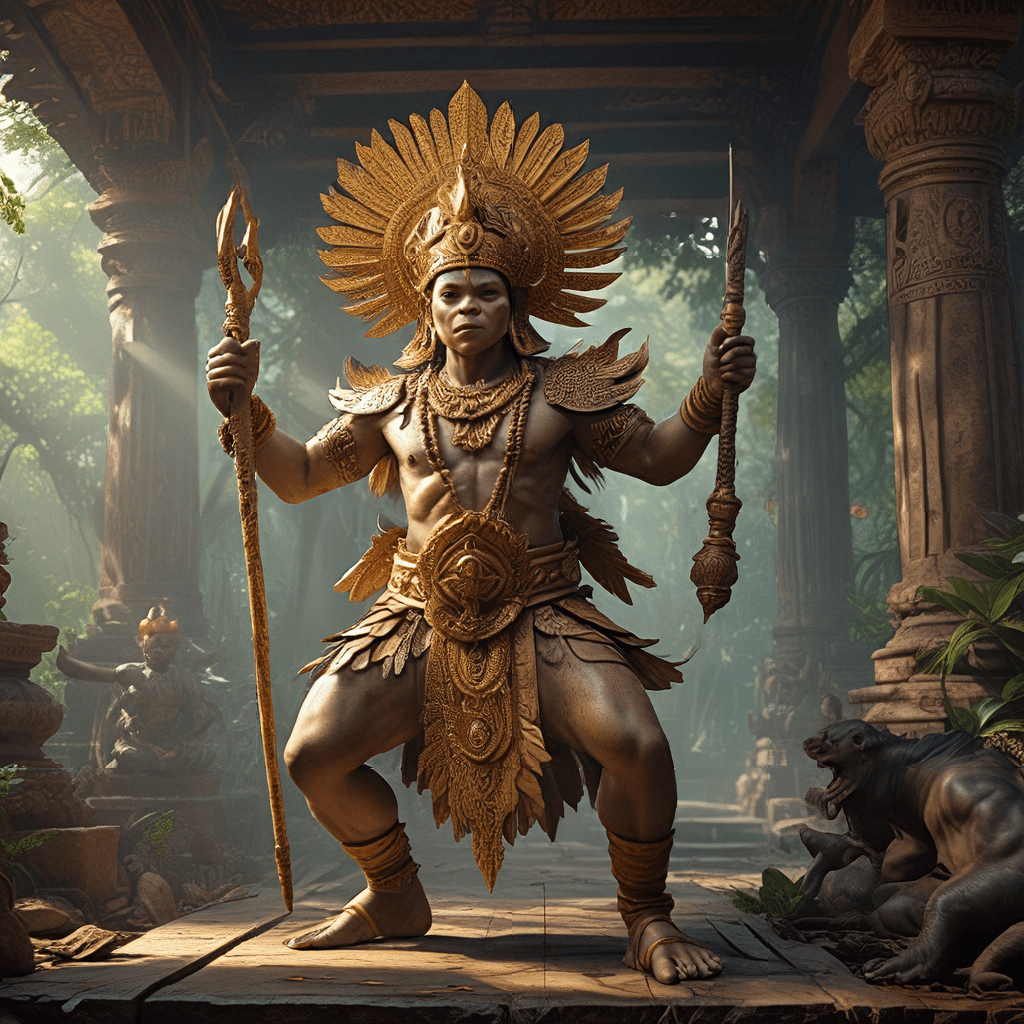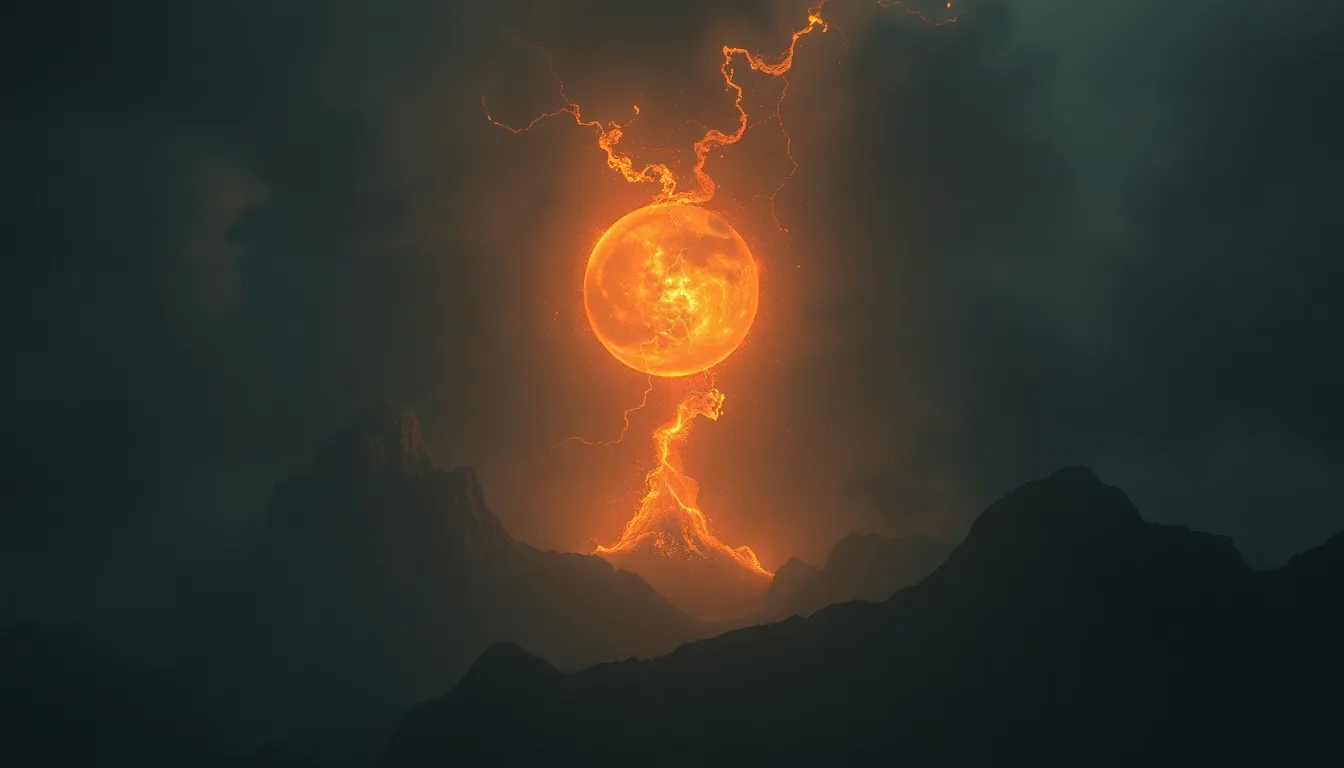Indonesian Mythology: How Transformation and Renewal Shape Culture
Introduction: A Tapestry of Transformation
Indonesian mythology is a rich tapestry woven with stories of transformation and renewal. From the tales of gods who shift their forms to the cycles of creation and destruction, these concepts are deeply ingrained in the Indonesian cultural fabric. They offer a way to understand the world, the challenges of life, and the enduring hope for rebirth and change.
Across the thousands of islands that make up Indonesia, diverse beliefs and traditions have flourished, resulting in a vast array of myths and legends. Each story holds a unique perspective on the nature of transformation. Whether it's the heroes who undergo trials and emerge stronger, or the spirits who embody the ever-changing forces of nature, the Indonesian people have long looked to mythology for insights into the cyclical nature of life and the power of change.
The Mythological Landscape: A World of Shifting Forms
Indonesian mythology is a world of vibrant and ever-shifting forms, where humans, animals, and spirits intertwine in a complex web of relationships. The stories are often rooted in the natural world, with mountains, rivers, and forests serving as symbolic landscapes.
Within this landscape, the gods themselves are capable of remarkable transformations. The supreme god, Sang Hyang Widhi Wasa, is often depicted in various forms, reflecting his immense power and the many aspects of creation. In other myths, deities take on the forms of animals, humans, or even inanimate objects to interact with the world and shape events. This fluidity of form is a key theme in Indonesian mythology, highlighting the interconnectedness of all things.
The Power of Transformation: From Gods to Humans and Back
Transformation is not limited to the gods. In countless tales, ordinary humans undergo remarkable transformations as well. These transformations can be physical, spiritual, or both, often signifying a significant change in their lives.
For instance, in the Javanese legend of "Roro Jonggrang," a princess transforms into a statue as a consequence of a curse. This story speaks to the power of anger and the potential for irreversible change. Conversely, heroes often undergo trials and emerge transformed, wiser, and stronger. These tales emphasize the importance of personal growth and the potential for redemption through hardship.
Renewal Through Cycles: The Cosmic Dance of Creation and Destruction
The concept of renewal is deeply integrated into Indonesian mythology. The universe itself is believed to be cyclical, undergoing periods of creation and destruction. These cycles are often represented by the dance of the gods, who bring about the birth and rebirth of the world.
One of the most prominent examples is the myth of "Batara Kala" and "Dewi Sri," representing the forces of destruction and creation. Batara Kala, the demon of time, devours the world, while Dewi Sri, the goddess of rice, brings forth new life and abundance. This constant dance between opposing forces ensures the renewal of the world and reinforces the belief in the cyclical nature of existence.
The Role of Spirits and Ancestral Beings
Spirits and ancestral beings play a crucial role in Indonesian mythology, serving as intermediaries between the human world and the spirit realm. They are often associated with specific places, objects, or natural phenomena.
Spirits can be benevolent or malevolent, and their influence on human affairs is profound. They can bring both blessings and curses, reminding humans of their interconnectedness with the unseen world. The ancestors, too, hold a powerful presence, offering guidance, protection, and a link to the past. The constant communication with these spirits and ancestors reinforces the idea that transformation and renewal are not only part of the natural world but also integral to human life.
The Symbolism of Animals and Nature
In Indonesian mythology, animals and nature are not simply background elements but hold powerful symbolic meanings. Each creature, from the majestic tiger to the humble ant, embodies specific qualities and lessons. The tiger, for example, represents strength, courage, and leadership. The monkey represents cleverness, agility, and mischievousness.
The natural world itself is deeply interwoven with the lives of humans and spirits. Mountains, rivers, and forests are often considered sacred sites, where spirits reside and magical events occur. The balance of nature is crucial in many myths, and the consequences of disrupting this balance are often severe. The stories serve as reminders to live in harmony with nature and respect the interconnectedness of all living things.
Transformation in Ritual and Ceremony
Transformation and renewal are not just concepts confined to myths; they are also embodied in Indonesian rituals and ceremonies. Many traditional practices are designed to connect with the spirit world, seek blessings, and bring about positive changes in individuals and communities.
For example, in the "Barong" dance of Bali, a mythical creature representing the forces of good battles a demon representing evil. This symbolic struggle represents the constant battle between light and darkness, and the eventual triumph of good.
Many ceremonies also involve offerings and sacrifices to appease spirits, ancestors, and gods. These rituals are believed to not only honor the supernatural beings but also to bring about transformation, healing, and good fortune. They are a tangible way for people to engage with the concepts of change and renewal on a practical level.
Theories of Transformation: The Influence of Indigenous Beliefs
The concept of transformation in Indonesian mythology is deeply rooted in indigenous beliefs that predate the arrival of major religions. These beliefs emphasize the interconnectedness of all things, the importance of balance in nature, and the power of spirits to influence human affairs.
The concept of "animism," the belief that spirits reside in all living and non-living things, is prevalent in many indigenous cultures across Indonesia. This belief fosters a sense of respect for the natural world and a deep understanding of the interconnectedness of all beings.
Hinduism and Buddhism, which arrived in Indonesia centuries ago, also played a significant role in shaping mythology and worldview. These religions introduced the concept of reincarnation and karma, emphasizing the cyclical nature of life and the potential for transformation through spiritual growth.
The Impact of Global Influences on Transformation
While indigenous beliefs and the influence of Hinduism and Buddhism are foundational to Indonesian mythology, transformation continues to be shaped by global influences. Colonialism, trade, and globalization have introduced new ideas and perspectives, enriching the tapestry of Indonesian mythology.
For example, the arrival of Islam in Indonesia brought with it new interpretations of death, resurrection, and the afterlife. These beliefs have found their way into local folklore and have contributed to a more complex understanding of transformation.
However, even as external forces shape Indonesian mythology, the core concepts of transformation and renewal remain deeply rooted in indigenous beliefs. These themes provide a framework for understanding the world, facing challenges, and finding hope for a better future.
Conclusion: Indonesian Mythology as a Source of Inspiration and Renewal
Indonesian mythology is a compelling testament to the human need to understand the mysteries of life and the power of change. Through the stories of gods, heroes, spirits, and animals, it offers insights into the cyclical nature of existence, the potential for personal growth, and the importance of renewal.
The stories serve as a reminder that change is inevitable, that challenges can be overcome, and that through hardship and resilience, individuals and communities can emerge transformed. This enduring spirit of transformation continues to inspire the Indonesian people and shape their cultural identity.
FAQ:
What are some important figures in Indonesian mythology?
- Sang Hyang Widhi Wasa: The supreme god in Balinese Hinduism.
- Batara Kala: The demon of time who devours the world.
- Dewi Sri: The goddess of rice who brings forth new life and abundance.
- Roro Jonggrang: A princess who is transformed into a statue.
- Barong: A mythical creature representing the forces of good.
What are some examples of animals with special significance in Indonesian mythology?
- Tiger: Represents strength, courage, and leadership.
- Monkey: Represents cleverness, agility, and mischievousness.
- Garuda: A mythical bird associated with the god Vishnu, represents freedom and power.
- Naga: A serpent-like creature representing water, fertility, and wisdom.
What are some elements of transformation in Indonesian mythology?
- Physical transformation: Gods changing forms, humans turning into animals or spirits.
- Spiritual transformation: Heroes undergoing trials to become stronger and wiser.
- Cyclical transformation: The constant dance between creation and destruction.
- Social transformation: Rituals and ceremonies aimed at bringing about positive change in communities.
How has globalization influenced Indonesian mythology?
Global influences have introduced new concepts and interpretations of transformation, particularly from Islam and Western cultures. This has led to a more diverse and complex understanding of change, while still maintaining the core themes of renewal and resilience found in indigenous beliefs.




